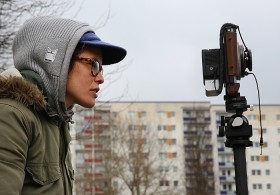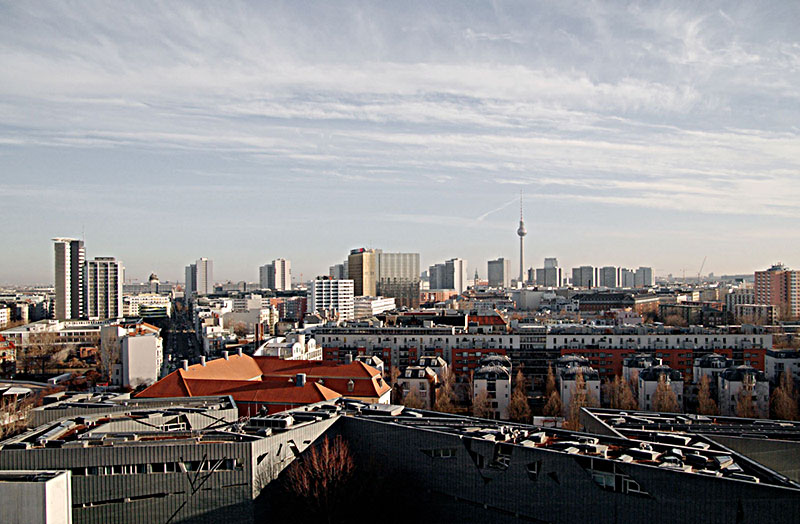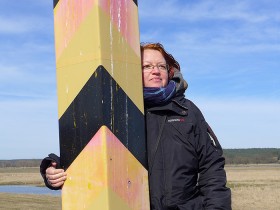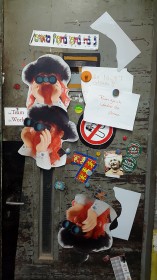
Hadas Tapouchi © Katja Täubert
History cannot be captured in a single form. Not in brass, not in metal. That is what Hadas Tapouchi says. The Berlin-based Israeli artist believes that monuments and inscriptions miss the actual sense of commemoration. This type of remembrance would be an inevitable path towards forgetting.
Undoubtedly, Hadas works against forgetting. Upon our first meeting at her Tel Aviv apartment about four years ago, the artist’s rendered self-portrait in prisoner’s garb immediately jumped out at me. It was one of the precursors to her project, “The Third Generation“. A countless number of portraits since followed – portraits of mutual friends, the author himself, as well as young men and women between Berlin, Tel Aviv and Ramallah. → continue reading
More and more young Israelis are moving to Berlin, bustling between Berghain and meshuggah parties, Neukölln and Prenzlauer Berg. The media can’t stop talking about them, but the vogue isn’t only due to the 50-years of diplomatic ties between Germany and Israel. There are in fact not a few young people moving to the German capital with innovative ideas and youthful brio, dabbling in the start-up or art scenes, running cafes, organizing parties.

Berlin’s skyline with a view of the Jewish Museum © Michele Nastasi
So what does that life really look like?
Last year I met Noga at a Berlin gallery and we quickly started talking about family, Berlin, and Israel. In September of 2010, Noga and her husband Zeevi moved to Berlin with just two suitcases – not to enjoy the party scene here for awhile, but to stay. I met with both of them to talk about their life in Berlin.
Jihan Radjai: Why did you decide to move to Berlin? → continue reading

Anna Adam, “Pastoral care for a German-Polish border post”, March 2015 © Jalda Rebling
It’s not easy to find the way there. Good thing that the artist picked me up at the nearest subway station in Berlin’s Wedding district. Together we cross the courtyards of various businesses, pass a halal diner, climb a staircase, and suddenly we’re standing in front of the door of her atelier. Hardly has Anna opened it when I see the “kosher gnome”, observing the world through his binoculars.
It’s this figure that the artist reproduced in paper cut-out form on a card for our art vending machine: you cut the card and fold it to create a three-dimensional object. The instructions state that you should set him in your kitchen and then everything will be ok.

Atelier Door with “Kosher Gnome” © Jewish Museum Berlin, Photography: Gelia Eisert
Anna, what does the odd name “kosher gnome” mean? How do “kosher” and “gnome” even fit together? How will everything be ok? I’m confused.
At home, a wichtel (in the original German) is an important little man. There are a lot of these “important men”. My “kosher gnome” was born in 2002. He’s definitely supposed to be confusing. “Kosher” and “gnome” fit together because I committed myself to the task of “healing the German-Jewish sickness”, as I call it. To that end I work with satirical means, which – unlike comedy – take everyday politics as a starting point.
You mentioned the year it was born. What were the circumstances of the “kosher gnome”‘s birth? → continue reading



